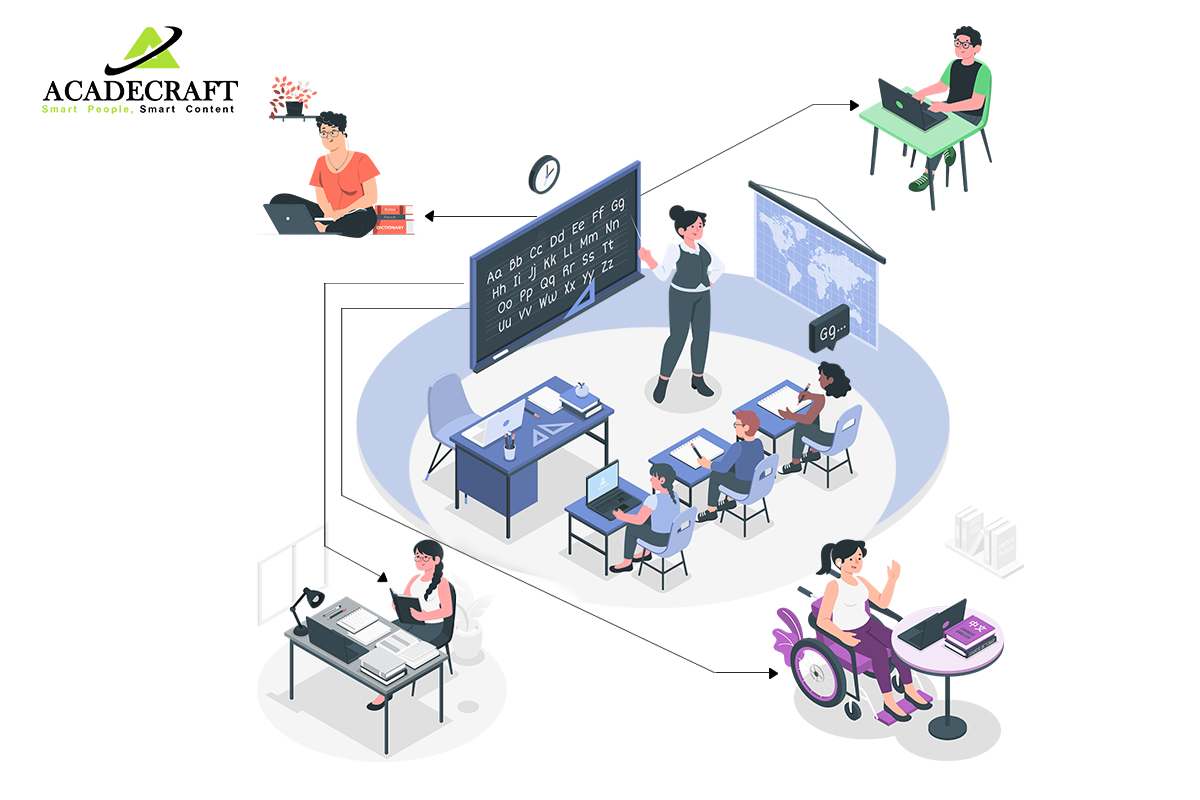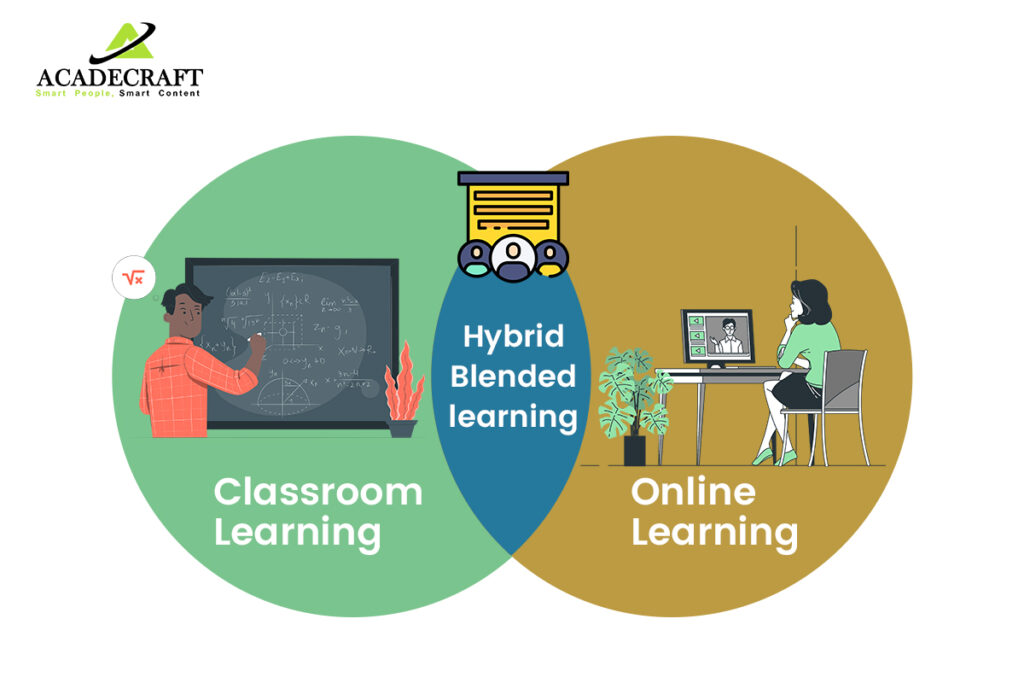
Learning was once restricted to the classroom. Students took notes, sat down, discussed with peers, interacted with the instructor, and completed tests in a physical location. While many flourished under this setup, not everybody selects this type of learning.
The same norm applies to a b2b training set-up. We live in a world of internet-connected devices and on-demand services, so aiming on an extensive lecture probably isn?t an apt way to learn for most.
It is also not exactly practical when you think about setting up machines for complex SaaS products or getting everyone in the same place at the same time.
With the digital revolution, a new substitute is now available. This blog will examine blended and hybrid learning, their respective learning styles, and how effective they may be for software training.
Blended learning solution is a combination of online and offline instruction where students work with the instructor, the material, and other students through both an online platform and a physical classroom.
The result is a collaborating environment that provides an interrelated learning experience across two channels. A usual setup is for the online component to provide extra exercises to match the in-class lecture.
Learners may still speak with teachers during offline hours. Blended learning solutions are really effective. In fact, both instructors and teachers prefer it over other teaching and learning models now that the pandemic has passed.
For business, blended learning is a huge advantage as it can improve the value of knowledge and training retention rates.
In hybrid learning, online exchanges replace much of physical communication between instructors and students. This does not mean that distant students merely passively watch an online lecture; instead, live classrooms incorporate virtual, interactive components.
An example of this is virtual hands-on training experiences, where a company can imitate real-world SaaS environment in the training they provide. This enhanced interactivity makes the lessons more effective, ingrained and personal.

Both blended and hybrid learning seem like the same concept, and most businesses use them mutually. However, there is a delicate yet crucial difference when looking at blended versus hybrid learning.
With a blended learning model, courses are shaped with a set amount of offline versus online instruction. There is no last-minute change or flexibility in the curriculum, as the classes are already planned.
While it is undeniably a benefit for students to have both learning choices, hybrid learning takes it to an advanced step. With a hybrid learning approach, the balance between offline and online instruction can constantly change and is flexible, depending on the needs of the students.
There are some crossover and notable differences between these two and it is important for parents and teachers to be aware of this.
In a hybrid scenario, teachers, parents, or students can decide where they learn from. The only requirement is that there is a combination of in-person learners and remote attendees and all students are present.
Location is the main concern of hybrid classrooms. Direct learning is a vital element of blended learning solutions. While on-site learning does not have to take place in a school, it can take place in another location or an education center.
Both students and teachers must be physically present in the same location for blended learning solutions.
In a hybrid classroom educators can choose what resources they build into their lesson plans. They can prioritize eLearning material or they may work merely from textbooks if they wish.
Different methods are preferred by different instructors and work well in a hybrid classroom who have the opportunity to use the material and resources that work best for their students and them.
Blended learning requires teachers to pool classroom based teaching methods with eLearning and online tools. When it comes to the online material, students must have the facility to work at a time and at their own pace that best suits them.
Teaching resources and methods are the most important elements to blended learning solutions.
Both blended and hybrid learning revolve around online interactions. Virtual training and online classrooms are more than just viewing theoretical lectures through video-conferencing software like Zoom. Instead, they can now create impactful remote experiences to add interactivity and engagement on a granular level.
The benefits of online learning include:
? Engagement: Maintaining one-on-one interactions between students and instructors, which increases the likelihood of user participation.
? Interactivity: Hands-on experience through virtual tools, exercise and simulation.
? Cost-efficiency: Online hands-on experiences are inexpensive to maintain and build than on-premises ones.
? Flexibility: Schedule training whenever suitable, as travel plans are not necessary.
? Capacity: An online classroom can open learning prospects for a limitless number of trainees and users.
? Scalability: A company can decrease or expand the number of environments they have arranged for a class.
? Accessibility: Online learning environments are handy from any machine with an internet connection irrespective of geographic location.
As remote working norms spread throughout the globe, travel becomes less essential, as organizations realize that traditional on-site classrooms alone are not so effective, modern business training is going the way of the hybrid model.
Acadecraft delivers content for blended and hybrid learning. They are a professional educational design solution provider that helps eLearning corporates and businesses worldwide.
Their skilled content developers can help in implementing high-quality and successful blended learning training plans and have experience. Plans designed by them not only provide maximum learning outcomes but also enhance personalization in training.
They blend social, mobile, and self-paced learning with classroom training, one-on-one training, and collaboration tools which helps in increasing user involvement.
We develop training programs and content that are agile, robust, multi-approach, integrated and accessible across all learning styles, platforms and technologies to enhance the learning experience of the learners.
We will be hearing more about the two words hybrid and blended learning in the near future. These have gained popularity throughout the world.
The popularity of hybrid and blended learning has accelerated as a result of the pandemic and hopefully tutors and instructors will now understand the difference between the two. Acadecraft guides enterprises and institutions through the process of choosing the ideal blend of training options to achieve desired goals.
Share